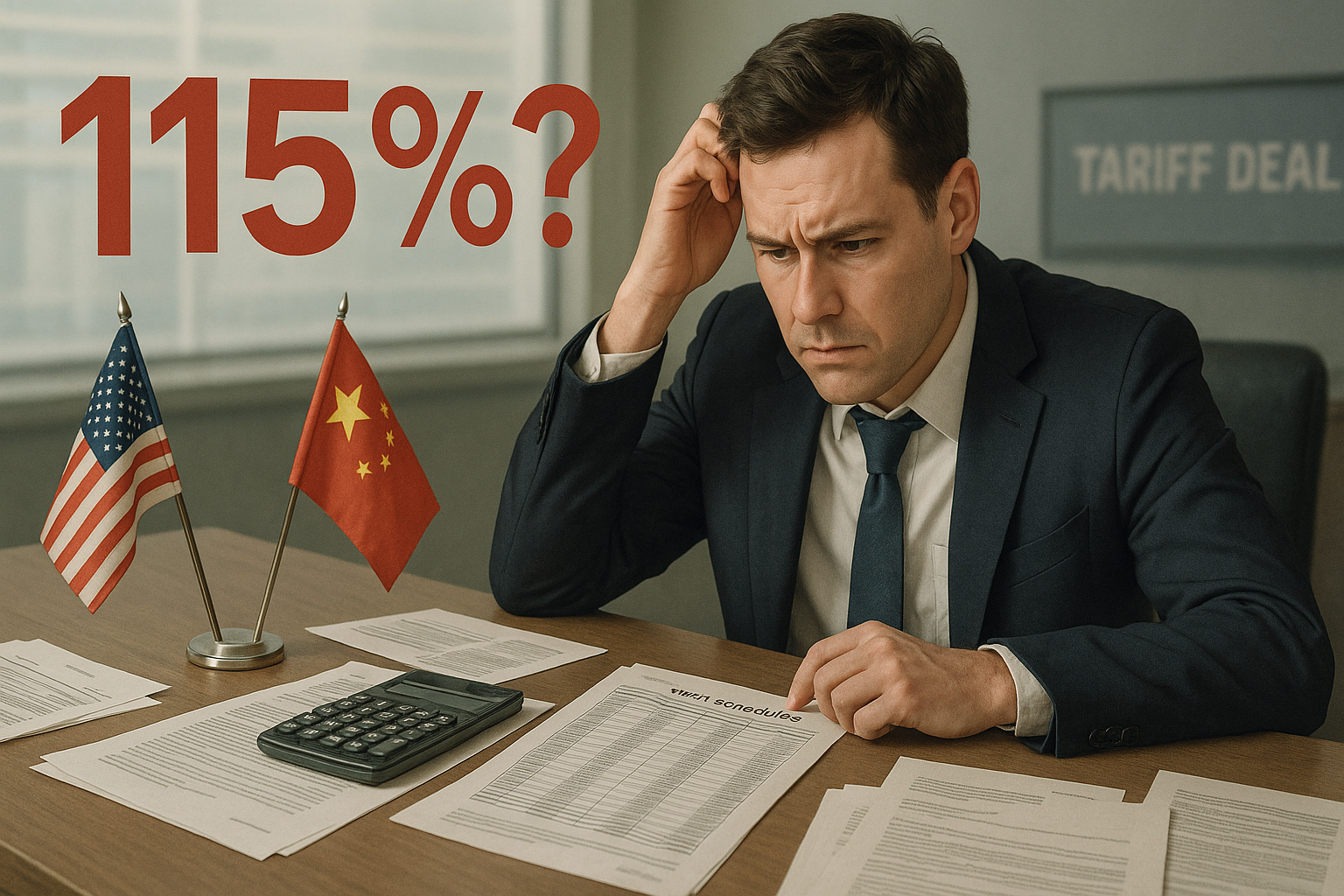A bizarre announcement hit the wires yesterday claiming China and the United States had agreed to reduce tariffs by 115% for a 90-day trial period. Yes, 115 percent—a number that has trade experts scratching their heads and economists reaching for their calculators.
I've covered US-China trade tensions since the Trump administration first launched its tariff offensive, and I've never seen anything quite like this. The mathematical impossibility of the figure suggests we're either witnessing a remarkable breakthrough in diplomatic creativity or, more likely, someone botched the press release spectacularly.
Let's get real for a moment. You can't reduce something by more than 100%. That's not politics—that's math.
"This has to be either a miscommunication or a different calculation methodology than what we're thinking," said Marcus Chen, international trade analyst at Wellington Partners. "Perhaps they're measuring against a different baseline, or combining tariff reductions with some form of subsidy."
The markets, surprisingly, didn't implode at this mathematical absurdity. In fact, the Dow actually climbed 210 points following the announcement. Why? Because after years of trade hostilities, investors seem willing to overlook mathematical impossibilities if it means progress between the world's two largest economies.
(I reached out to three separate officials at the US Trade Representative's office. None would speak on record, though one admitted with a laugh that "the numbers are being clarified.")
The 90-day timeframe itself tells a story. It's classic diplomatic hedging—long enough to gauge effects but short enough for both sides to back away without losing face if things go south.
For American manufacturers caught in the crossfire of this trade war, these temporary measures create a planning nightmare. How do you manage supply chains when the rules might completely flip in three months? It's like trying to cook dinner while someone keeps changing the recipe.
Look, we've seen questionable trade math before. Remember the 2019 "Phase One" deal where China supposedly committed to purchasing an additional $200 billion in American goods? Those targets weren't just missed—they were missed by miles. Yet markets rallied anyway.
What's actually happening here? The most plausible explanation is that various tariff lines across different product categories are being reduced by different percentages, totaling 115 percentage points when added together. Or perhaps it's a combination of tariff reductions and other trade-facilitating measures.
But that's not nearly as headline-grabbing as "115% reduction," is it?
Trade policy has increasingly become a form of political theater—more about perception than economic reality. Having sat through countless trade press conferences over the years, I've noticed how the substance of deals often matters less than the impression of forward momentum.
For businesses... well, good luck planning your Q3 operations. This kind of announcement is why procurement managers develop drinking problems.
The real question isn't about the math—it's about whether this represents a genuine thaw in US-China relations or just another temporary ceasefire in a long economic cold war.
I'll be watching for the inevitable "clarification" press release. Until then, we're left with a trade deal that's either revolutionary or ridiculous—and possibly both.




